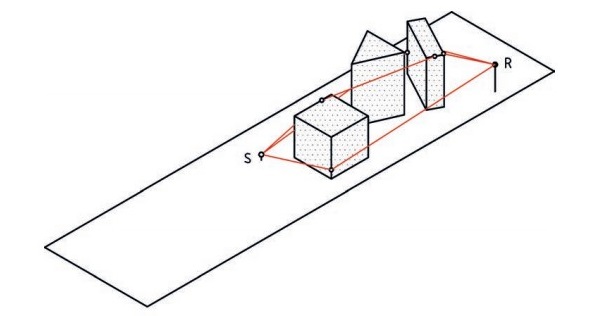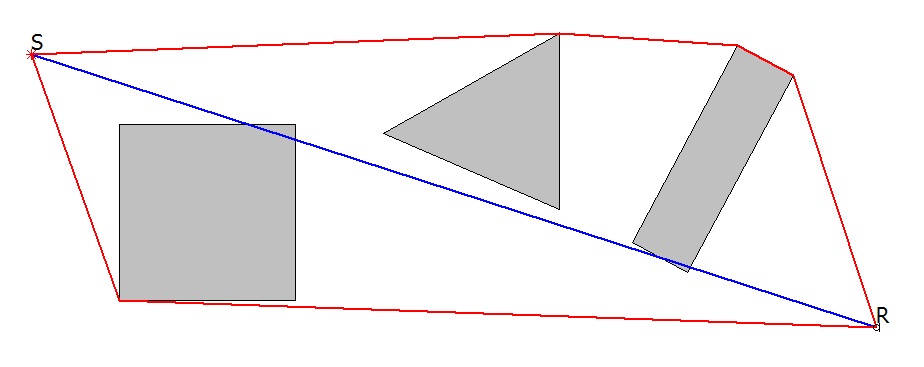Quality Assured Implementation of ISO 9613 in iNoise
By Erwin Hartog van Banda
DGMR Software, the Hague, the Netherlands
Introduction
Uncertainty in prediction is usually considered to be related to the accuracy of the input data and the accuracy of the prediction method. This article addresses another very important kind of uncertainty that is related to the (un)clearness of the prediction method and the interpretations software developers are forced to make while implementing ambiguous prediction algorithms. For most noise calculation standards, there are no quality requirements and no test cases. The ultimate benefit of quality requirements would be that the calculated results with different software programs, using the same data input, can be expected to show just about the exact same results within a narrow margin, thereby avoiding incorrect comparisons between two different software implementations. This paper describes the findings of DGMR, member of the ISO 17534 working group, while using the recommendations of TR3 for the implementation of ISO 9613 in their new iNoise software.
Why QA
The ISO 9613-2 standard is a well-known method for the calculation of industrial environmental noise. The standard was published in 1996 and since then has been implemented in numerous commercial software applications. The standard, however, does not contain quality requirements for software implementation, such as test cases and recommendations on interpretations of potentially unclear algorithms. Therefore, the calculated results of different implementations for the exact same situation cannot be expected to be the same. When comparing different software implementations of ISO 9613-2 the results of different applications can differ up to 5 dB for simple situations and up to 10 dB for complex situations. This makes the result of noise prediction software even more uncertain—not because of bugs or errors in the software, but because of unclear text and ambiguous algorithms in the standard. For many years now, this has been an inconvenient truth in the world of noise prediction. At the Forum Acusticum Congress in 2005, special focus was put on uncertainties while implementing noise prediction standards. More papers on quality requirements for software implementation were presented in the years following. This has all contributed to the new quality standard ISO 17534 in 2015. In TR3 (ISO/TR 17534-3) test cases and recommendations for implementation of ISO 9613-2 are described in detail. This should make ISO 9613-2 unambiguous and should make it straightforward to implement in software.
The Effect of QA
The main goal of ISO 17534 is to minimalize the differences in calculated results of different implementations of noise prediction standards. To examine the effect of ISO 17534, two commercial software implementations were compared using the 19 test cases described in TR3, one of the packages being the new iNoise software developed by DGMR. Both software packages are available with and without the recommendations of TR3. The comparison could therefore be made for two cases, with and without the recommendations of TR3. The results of the comparisons are shown in table 1.

Table 1. Absolute Differences in dB between Two Software Packages with and without QA for ISO 9613
As displayed in table 1, there is a significant positive effect when applying QA. The large difference of 15.6 dB in test case 17 is now reduced to 0.0 dB. The reason for this is the new unambiguous rubber-band method to calculate lateral detours. In ISO 9613 the left and right detours are in many cases unclear and ambiguous. One could choose to select the screen that has the highest screening effect. In TR3 the combined effect for all screens, according to the rubber-band method, is always used as shown in figures 1 and 2.

Figure 1. 3-D presentation of test case 17.

Figure 2. The red lines show the lateral detours using the rubber-band method for test case 17.
The difference of 2.4 dB for test case 19 (fig. 3) is caused by a contradiction between TR3 and ISO 9613-2. In test case T19, a reflection is calculated in a barrier that is located on a slope and the length of which is larger than its height. According to the test results of TR3, there is a reflection contribution for 500 Hz until 8,000 Hz octave bands. However, according to ISO 9613-2, this reflection should only occur for the 8,000 Hz octave band due to the low height of the reflecting facade in respect to the wavelength.

Figure 3. 3-D presentation of test case 19.
This omission has already been reported to, and acknowledged by, the ISO 17534 working group.
For the other software package used in this comparison, the option to include the recommendations of TR3 obviously also deactivated the wavelength criterion for the height of reflecting barriers and automatically included a node to the barrier.
Conclusion
The ISO 17534 standard fulfills its aim. The differences in results between separate software implementations of ISO 9613 are strongly reduced when using the recommendations of ISO 17534-3. A similar positive affect can be expected when using this approach for other methods such as the new CNOSSOS-EU.
iNoise-Free
iNoise is the new intuitive and quality assured software from DGMR Software for modeling environmental noise from industries and wind turbines. The free configuration can handle impact studies with up to 20 sources and 100 objects. iNoise is now used in over 80 countries worldwide. The latest version includes a valley correction for wind turbines. For more information and download of the free configuration, visit https://dgmrsoftware.com/products/inoise/configurations/.
Sources
Hartog van Banda, S. E., and D. Manvell. 2013. “Implementing Noise Prediction Standards in Software—Challenges and Experiences.” INTER-NOISE.
Hartog van Banda, S. E., and H. Stapelfeldt. 2005. “Implementing Prediction Standards in Calculation Software—the Various Sources of Uncertainty.” Forum Acusticum.
–——. 2007. “Software Implementation of the Harmonoise/Imagine Method, the Various Sources of Uncertainty.” INTER-NOISE.
ISO-9613-2. 1996. “Acoustics—Attenuation of Sound during Propagation Outdoors—General Method of Calculation.” International Organization for Standardization.
ISO/TR 17534-3. 2015. “Acoustics—Software for the Calculation of Sound Outdoors—Recommendations for Quality Assured Implementation of ISO 9613-2 in Software.” International Organization for Standardization.


